#angelica garnett
Explore tagged Tumblr posts
Text
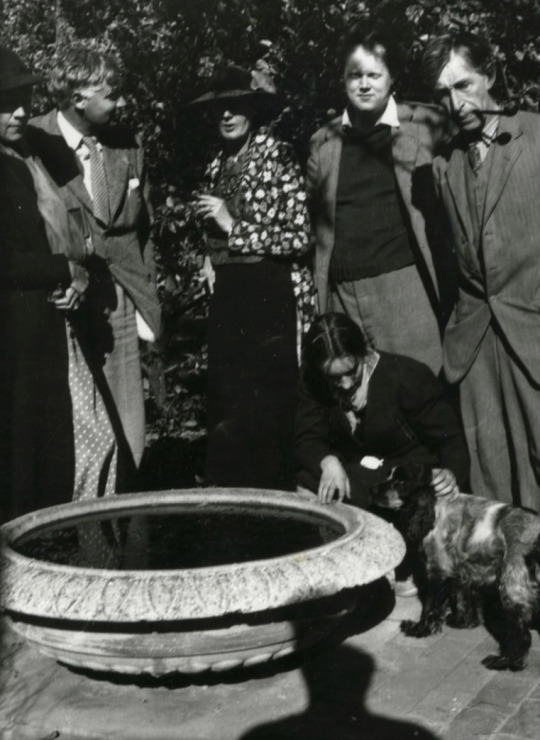
Vanessa Bell, David Garnett, Virginia Woolf, Quentin Bell, Leonard Woolf and Angelica Bell with Spaniel Sally at Monk's House, Rodmell
1940
#vanessa bell#david garnett#virginia woolf#quentin bell#leonard woolf#angelica bell#1940#1940s#vanessa age 61#me age 61
1 note
·
View note
Text
THIS DAY IN GAY HISTORY
based on: The White Crane Institute's 'Gay Wisdom', Gay Birthdays, Gay For Today, Famous GLBT, glbt-Gay Encylopedia, Today in Gay History, Wikipedia, and more … January 21



1885 – Duncan Grant (d.1978) was one of the major British artists of the twentieth century, as well as the sexual catalyst of that remarkable group of friends, the Bloomsbury Circle, which included, among others, writer Lytton Strachey and economist John Maynard Keynes, who were to be among Grant's lovers.
Born Duncan James Corrow Grant in Scotland into an artistically cultivated Scottish family prominent in governing the British empire, Grant as a child recognized his attraction to other boys and actively sought out sexual encounters with them.
Grant spent his childhood in India but returned to Britain in 1893. He travelled to Paris in 1906, where he studied with Jacques-Emile Blanche and became acquainted with Picasso and other influential artists of the time. In 1910, he returned to England to exhibit as a post-impressionist and then experimented with abstraction.
Famous for his use of color, he was called "the Matisse of Britain." His career flourished and his work was widely commissioned and collected by patrons, including Queen Elizabeth (the late Queen Mother), as well as by museums throughout the world.
Soon after World War II, the abstract school triumphed. Nevertheless, Grant had begun painting in a representational style, where his unabashed depictions of the male figure declared his sexual preference.

Bathers by the Pond
Throughout his life, Grant produced homoerotic sketches and paintings. When he was commissioned to decorate the Russell Chantry in Lincoln Cathedral in the late 1950s, he used his lover, the youthful, blond, physically beautiful Paul Roche, as the model for the face and body of Christ.
Despite the oppressiveness of British law and social attitudes condemning homosexuality, Grant lived openly as a gay man. "Never be ashamed," he liked to say. He remarked that his moral sensibility came from the Regency period, the pre-Victorian era noted for its relaxed sexual mores.
Although unabashedly homosexual in orientation, Grant was the object of desire of men and women alike. The painter Vanessa Bell, for example, with whom Grant and her husband art critic Clive Bell, shared a Sussex farmhouse for many years, fell in love with him.
Grant reluctantly yielded when she climbed into bed with him. She became pregnant and, in 1918, gave birth to a daughter she named Angelica. Grant neither acknowledged nor denied his paternity. However, when Angelica was a teenager, Vanessa told her that Grant was her father.
The young woman was traumatized with outrage and bitterness. After her mother's revelation, Angelica initiated an affair with and later married writer David Garnett, whom she knew to have been Grant's lover at the time of her conception.
Grant died peacefully on May 9, 1978, at the age of 92, in the arms of his companion, the poet Paul Roche. Grant's will divided his estate, including the copyrights to his work, between Roche and Angelica Garnett.
Unfortunately, Garnett has used this power to restrict and generally deny permission to reproduce Grant's work. As a result, the artist remains something of a ghostly figure, despite the resurgent interest in representational art and the perennial fascination with Bloomsbury.
*****
In 2020, an extraordinary stash of more than 400 erotic drawings by Duncan Grant that was long thought to have been destroyed came to light, secretly passed down over decades from friend to friend and lover to lover.
In the 1940s and 50s Grant made hundreds of drawings, many of them explicit and often influenced by Greco-Roman traditions as well as contemporary physique magazines.

One of the sketches
In May 1959, Grant gave his friend Edward le Bas a folder marked “these drawings are very private”. The mythology in Bloomsbury circles is that the drawings were later destroyed, probably by Le Bas’s sister. That was that, until Nathaniel Hepburn, the director of Charleston, the beautiful Sussex farmhouse Grant and Vanessa Bell called home, was contacted with an offer of the drawings.
The offer came from the retired theatre designer Norman Coates, who for years stored the drawings in plastic folders under his bed.
Coates said the drawings were “extraordinary, so in your face. You can’t avoid them. When I’ve occasionally brought them out to show selected friends after dinner, after the initial ‘My God’ exclamation at these very explicit drawings, they mellow … the sexual element really doesn’t dominate.
“It is the painting and the skill of his drawing and the aesthetic of it which negates the sexiness of them. It becomes irrelevant that the subject is what it is … it is a very odd feeling. It just becomes a beautiful collection of pictures.”
Coates was left the drawings by his partner, Mattei Radev, who died in 2009. Radev, a Bloomsbury mainstay who as a younger man had had a secret and tortured affair with E.M. Forster, was left them by Eardley Knollys, who died in 1991.
Knollys, who ran the influential Storran gallery in London and had an affair with Jean Cocteau, was given them by Le Bas, a painter. Le Bas was given them by Grant, a man who the economist John Maynard Keynes briefly thought might be the love of his life.
Hepburn said the drawings were often explicit fantasies but, as a whole, they were something more. “They are, I think, a body of work that talks of love. Of course at a time they were made, that is a love that was illegal,” he said. “He was never able to share the works. How we see them now will be very different.”


1895 – The best known Spanish fashion designer, Cristóbal Balenciaga was born (d.1972). Regarded as the master of fashion, his classic designs inspired the fashion industry throughout most of the twentieth century and continue to exert influence.
Born in Guetaria, near San Sebastian, Spain, Cristóbal Balenciaga Eisaguirre was the son of a fisherman. He studied needlework and dressmaking with his mother until 1910. In 1915, he established his own tailoring business under the sponsorship of Marquesa de Casa Torres. By the early 1930s he had established a reputation as Spain's leading couturier. Following the outbreak of the Spanish Civil War in 1936, Balenciaga closed his three couture houses and left Spain. After a brief stay in London, Balenciaga settled in Paris and in 1937 opened The House of Balenciaga on Avenue George V.
Balenciaga never married. This fact, coupled with his career in fashion, has led to speculation and rumors about his sexuality. A deeply private man, he never discussed his personal life publicly. One particular incident reported by writer Jacqueline Demornex may, however, throw a little light on his sexuality. After an argument between the couturier Coco Chanel and Balenciaga, Chanel allegedly made the following observation to a mutual friend: "It is obvious that he dislikes them (women); look at the way he conceals blouses under suits, just to expose the wrinkles in their necks." Inasmuch as such charges are frequently made against gay male designers, Demornex ponders why Chanel attacked Balenciaga in such a way: was it his age, his way of dressing women, or his private life?
So flattering were Balenciaga's creations that women often ordered more than one of each design so that they could wear one while the other was being cleaned or so they could keep one at each of their houses. Remembered as a master of black, Balenciaga often favored a muted palette of colors, especially a combination of black and brown, inspired by the traditional dress of his native Spain. Spain was also the source and inspiration for his use of lace, his heavy embroidery with jet-encrusted trimmings, as well as the brilliant whites and the drama and dignity of stiff formal fabrics reminiscent of those painted by Goya and Velásquez.
In 1968 Balenciaga closed his business rather than see it compromised in a fashion era he did not respect. He retired to Spain and died in 1972.


1905 – Fashion designer and icon Christian Dior was born on this date (d.1957). He was born in Granville, Manche, Normandy, France, the younger son of Maurice Dior, a manufacturer of fertilizer and chemicals, and his wife, the former Madeleine Martin. Dior had an elder brother, Raymond, whose daughter was the Nazi sympathizer Françoise Dior. Acceding to his parents' wishes, Dior attended the Ecole des Sciences Politiques from 1920 to 1925. The family, whose fortune was derived from the manufacture of fertilizer, had hopes he would become a diplomat, but Dior only wished to be involved in the arts. After leaving school he received money from his father so that in 1928 he could open a small art gallery, where he sold art by the likes of Pablo Picasso and Max Jacob. After a family financial disaster that resulted in his father losing his business, Dior was forced to shut down the gallery.
In the 1930s Dior made a living by doing sketches for haute couture houses. In 1938 he worked with Robert Piguet and later joined the fashion house of Lucien Lelong, where he and Pierre Balmain were the primary designers. In 1945 he went into business for himself, backed by Marcel Boussac, the cotton-fabric magnate. Dior's fashion house opened in December 1946, and the following February, he presented his first collection, known as Corolle. It was more famously known as the New Look. The actual phrase the "New Look" was coined by Carmel Snow, the powerful editor-in-chief of Harper's Bazaar. Dior's designs were more voluptuous than the boxy, fabric-conserving shapes of the recent World War II styles, influenced by the rations on fabric. He was a master at creating shapes and silhouettes; Dior is quoted as saying "I have designed flower women." His look employed fabrics lined predominantly with percale, boned, bustier-style bodices, hip padding, wasp-waisted corsets and petticoats that made his dresses flare out from the waist, giving his models a very curvaceous form. The hem of the skirt was very flattering on the calves and ankles, creating a beautiful silhouette. Initially, women protested because his designs covered up their legs, which they had been unused to because of the previous limitations on fabric. There was also some backlash to Dior's designs form due to the amount of fabrics used in a single dress or suit--during one photo shoot in a Paris market, the models were attacked by female vendors over the profligacy of their dresses--but opposition ceased as the wartime shortages ended. The New Look revolutionized women's dress and reestablished Paris as the center of the fashion world after World War II.
Dior died at the health spa town Montecatini. Some reports say that he died of a heart attack after choking on a fish bone. Time magazine's obituary stated that he died of a heart attack after playing a game of cards. However, the Paris socialite and Dior acquaintance Alexis von Rosenberg, Baron de Rédé stated in his memoirs that contemporary rumor had it that the fashion designer succumbed to a heart attack after a strenuous sexual encounter with two young men. His companion, at the time of his death, was an Algerian-born singer, Jacques Benita.


1959 – Antonio D'Amico is an Italian model and fashion designer.
D'Amico was born in Mesagne, in the Italian province of Brindisi, and later lived in Milan. He was hired as a part-time office administrator for his first job. He met Gianni Versace in 1982, and the couple eventually embarked on a long-term relationship that lasted 15 years, until Versace's murder in 1997. During that time, he worked as designer for the Versace Sport line. D'Amico now runs his own fashion design company.Versace's will left D'Amico with a pension of 50 million lira a month for life, and the right to live in any of Versace's homes in Italy and the United States. However, since the properties that were left to D'Amico in Gianni's will actually belonged to the company, the homes belonged to Versace's sister Donatella, brother Santo, and his niece, Allegra after his death. After working out agreements with lawyers, D'Amico obtained a fraction of the pension and a restricted right to live in Gianni's properties. D'Amico's relations with the rest of the Versace family have not always been easy; Donatella said in March 1999,
"My relationship with Antonio is exactly as it was when Gianni was alive. I respected him as the boyfriend of my brother, but I never liked him as a person. So the relationship stayed the same."


1966 – Time Magazine publishes an unsigned two-page article, "The Homosexual in America." The article includes statements such as "[Homosexuality] is a pathetic little second-rate substitute for reality, a pitiable flight from life. . . . it deserves no encouragement . . . no pretense that it is anything but a pernicious sickness."


1988 – John Early is an American comedian and actor. He has appeared on 30 Rock as Jenna Maroney's son and in the independent film Fort Tilden. He stars in Search Party, which was written partly by Michael Showalter and also stars Alia Shawkat.
Early was featured on Lauren Lapkus' podcast (Episode #41, August 28, 2015), as well as Wet Hot American Summer: First Day of Camp, which was released on Netflix in the summer of 2015. He tours around the country with his stand-up/variety show "Literally Me" and also hosts a monthly variety event (called Showgasm) at Ars Nova in New York City. He has made voice appearances on two episodes of Bob's Burgers as brunch blogger Dalton Crespin.
Early frequently collaborates with comedians such as Hamm Samwich and Kate Berlant in a variety of sketch and filmed presentations. In 2016, he wrote and starred in his own 30-minute episode of the sketch show Netflix Presents: The Characters. He also had a small role as Evan in the 2017 comedy Beatriz at Dinner, starring Salma Hayek and John Lithgow.
Early is from Nashville, Tennessee. His father was a Presbyterian minister; his mother, a minister of the Disciples of Christ. He attended the University School of Nashville. He graduated from New York University where he majored in Acting. He is gay.


Javier Calvo and Javier Ambrossi
1991 – Javier Calvo Guirao is a Spanish actor, stage director, and film director. He is the best known for his role of Fernando "Fer" Redondo in the Antena 3 series Física o Química and for creating and directing the musical La llamada together with Javier Ambrossi, as well as co-directing its film adaptation.
Calvo began acting in theatre at age 11, eventually appearing in 2007 in the film Doctor Infierno. Beginning in 2008, he starred in the Antena 3 television series Física o Química, portraying gay teenager Fernando "Fer" Redondo. Focusing on problems such as drugs, addictions, anorexia and sexual orientation, the series attracted much controversy. Calvo considers the themes of the series "problems that are also present in reality". He, however, received critical acclaim for portraying a gay male in his debut role.
Since 2010, Calvo has been in a relationship with actor and director Javier Ambrossi.


2009 – The Swedish parliament was presented with legislation that would allow Gay couples to marry in civil ceremonies or in the Lutheran Church, which until 2000 was the official church of Sweden. "The main proposal in the motion is that ... a person's gender will no longer have any bearing on whether they can marry. The marriage law and other laws concerning spouses will be rendered gender neutral according to the proposal," a statement from Prime Minister Fredrik Reinfeldt's conservative Moderates said.
The proposal had wide backing in parliament and is expected to be adopted, though a date has yet to be set for a vote. While heterosexuals in Sweden can choose to marry in either a civil ceremony or a church ceremony, homosexuals are currently only allowed to register their "partnerships" in a civil ceremony. Civil unions granting Gays and Lesbians the same legal status as married couples have been allowed in Sweden since 1995. If the new legislation is adopted, Sweden, already a pioneer in giving same-sex couples the right to adopt children, would become the first country in the world to allow Gays to marry within a major Church. Under the proposal, Lutheran pastors will be able to opt-out of performing Gay marriages if they have personal objections.


2009 – ABC television station in Los Angeles refused to air a Public Service Announcement about Gay Families claiming it was "too controversial" to run during inauguration coverage. KABC-TV in Los Angeles refused to run public service announcements from Get To Know Us First, a group that promotes acceptance of LGBT families.


2013 – President Obama made the first mention of gay rights in a U.S. inaugural address. The text of President Obama’s Inauguration speech reads: "It is now our generation’s task to carry on what those pioneers began. [. . .] Our journey is not complete until our gay brothers and sisters are treated like anyone else under the law — for if we are truly created equal, then surely the love we commit to one another must be equal as well."


19 notes
·
View notes
Text

dancing in this world alone inspo (from deceived with kindness by angelica garnett)
#probably won't banish ken to france but? maybe?#fic ramblings#dancing in this world alone#was interested in/inspired by how highly the narrator speaks of this couple despite their v. questionable origin story#and just like. the fact that not everyone who wrongs you in life gets their comeuppance#so this is where i got the idea of how to write rilla and ken's breakup
5 notes
·
View notes
Text
"Vanessa was teased by the others for her silences but they were an indication of what lay beneath, almost like a piece of semi-opaque glass let into the floor through which, when the light was favourable, one might be lucky enough to glimpse things usually hidden. One of these was her shy determination to be a painter, the other her capacity for deep feeling, in which she herself may have found something disconcerting and even frightening. The whole cast of her mind, unenquiring and passive, was opposed to analysis: unlike Virginia, she never learnt to project the light of self-questioning onto her own behaviour. Instead she clung to a hope that all problems could be solved by rationalising them, and that there was somewhere a perfect system that would do away with threatening or painful situations."
Angelica Garnett about her mother the artist Vanessa Bell, sister of Virginia Woolf in Deceived with kindness: a Bloomsbury childhood, 1984.
3 notes
·
View notes
Text
“On Vanessa’s emergence from the kitchen she and Duncan would retire down the long passage to the studio, which was half work-room and half sitting-room, redolent of oil and turpentine. Easels and paintboxes stood about, brushes, sometimes festooned with cobwebs, emerged from jugs or jam jars, palettes and tubes of paint lay on stools or tables, while there was often a bunch of red-hot pokers and dahlias arranged in front of a piece of drapery. The gun-powder-coloured walls were hung with canvases of many shapes and sizes, and some of Duncan’s favourite objects, such as a jointed ~ or rather disjointed ~ Sicilian wooden horse, a silver table-watch once given by her admirers to Lydia Lopokova, a fan and perhaps a child’s drawing, could be seen balanced on the mantelpiece or pinned to a spare piece of wall.”
(This passage comes from a book called Deceived with Kindness, which was written by Angelica Garnett.)
0 notes
Text
Non-Work Reading, 2023
Emma Cline, The Guest, The Girls
Alexander Stille, The Sullivinians
Barbara Trapido, Temples of Delight
Elizabeth Mavor, A Green Equinox
Cesare Pavese, The Beautiful Summer
Sophie Mackintosh, Cursed Bread
Benjamin Wurgaft and Merry White, Ways of Eating
Angelica Garnett, Deceived with Kindness
Olivia Laing, Funny Weather
Claire Messud, The Burning Girl
Elisa Shua Dusapin, The Pachinko Parlour
Lauren Elkin, No. 91/92
Lisa Appignenesi, Everyday Madness
Leonardo Sciascia, The Moro Affair
Leah Ypi, Free
John Berger, To the Wedding
Sigrid Nuñez, A Feather on the Breath of God
Deborah Levy, August Blue
Hilary Mantel, Giving Up the Ghost
Bonnie Garmus, Lessons in Chemistry
Nawal El Saadawi, Love in the Kingdom of Oil
Margaret Kennedy, The Feast
Nora Ephron, Crazy Salad
#Leah Ypi#John Berger#Sigrid Nunez#Emma Cline#Deborah Levy#Hilary Mantel#Claire Messud#Olivia Laing#Elizabeth Mavor
1 note
·
View note
Text
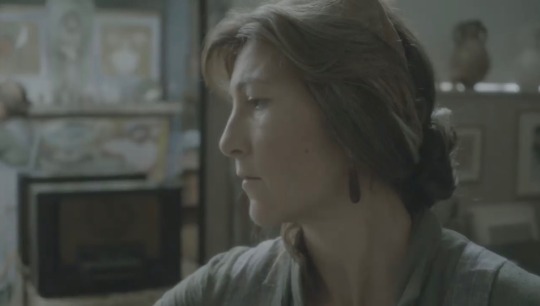
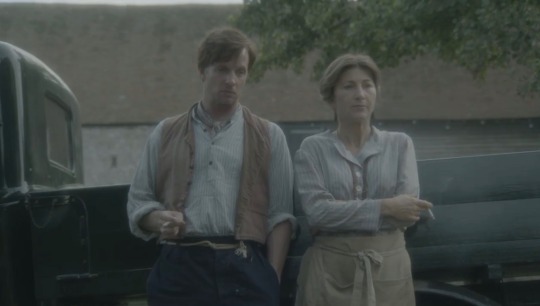

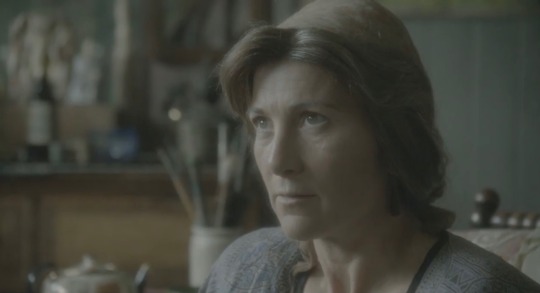
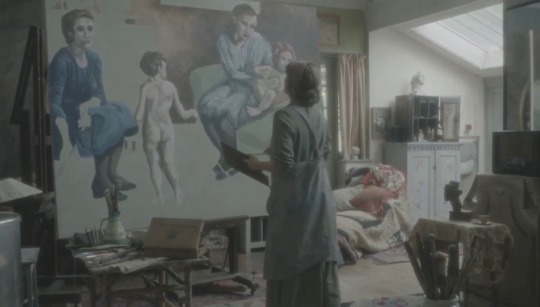
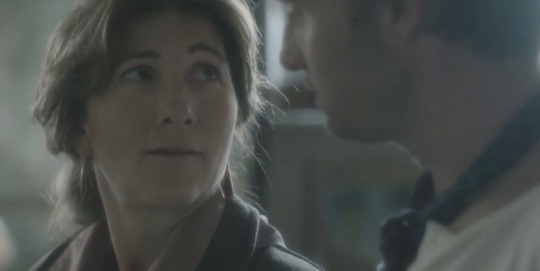
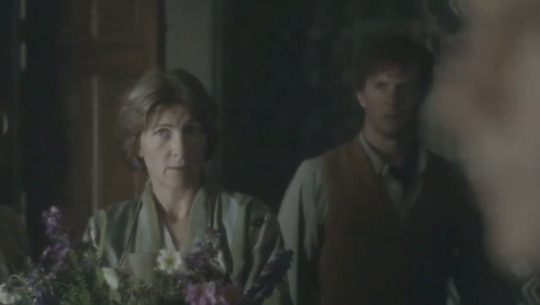
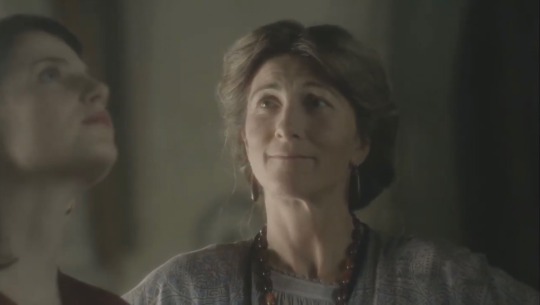


Eve Best as Vanessa Bell
Life In Squares (2015)
#eve best#life in squares#lucy boynton#jack davenport#james norton#rupert penry jones#phoebe fox#andrew havill#cathrine mccormack#bloomsbury group#fuck she’s beautiful#vanessa bell#duncan grant#angelica garnett#virginia woolf#david garnett#cottegcore queen
162 notes
·
View notes
Photo

Vanessa Bell, Interior with Artist’s Daughter, 1935.
#vanessa bell#artist#female artist#england#impressionist#bloomsbury#bloomsbury group#angelica garnett#virginia woolf#art
114 notes
·
View notes
Text
Duncan Grant lived with Virginia Woolf's sister, the artist Vanessa Bell at Charleston Farmhouse near Firle in Sussex England. Although Grant was mostly interested in men as sexual partners he did father Vanessa's daughter, Angelica. One of Duncan's lovers, David Garnett, made the comment when Angelica was born that she was so beautiful he would like to marry her some day. Twenty or so years later that is exactly what he did. Angelica went through the early part of her life believing that Vanessa's husband, Clive Bell, was her father. Vanessa and Clive had an open marriage and both had various lovers. But they remained married to each other for the rest of their lives. Clive and Vanessa carried on an appearance of being Angelica's biological parents although Clive knew that Duncan was Angelica's father. I visited Charleston Farmhouse in 2005. It is a work of art in itself with furniture and fireplaces painted with elaborate designs by the two artists. The wallpapers and furniture upholsteries were also designed by Duncan and Vanessa. The studio where the two artists painted has their paintings hung up and in some cases resting on the floor against a wall. There were a couple of Duncan's paintings on display that were very homoerotic. One nude in particular of a very well put together man.

Untitled by Duncan Grant. 1 of 422 erotic postcards drawn by Duncan Grant between 1946-59. The postcards were given to Edward Le Bas in 1959 and were thought to have been destroyed by Le Bas's sister upon his death in 1966. They in fact bounced from owner to owner until they ended up in the possession of theatre designer Norman Coates, who kept the drawings under his bed. Coates donated the drawings to the Charleston Trust. The drawings are estimated to be worth $2 million dollars.
230 notes
·
View notes
Text



Book haul from kennys.ie
3 notes
·
View notes
Text

Portrait of Angelica Garnett, 1940, Duncan Gran
1 note
·
View note
Photo









official and honorary female members of the bloomsbury group
#historyedit#history#weloveperioddrama#weloveperiodramaedit#Virginia Woolf#vanessa bell#Angelica Garnett#Lydia Lopokova#karin stephen#molly maccarthy#katherine mansfield#Vita Sackville West#ottoline morrell#dora carrington#alix strachey#dorothy bussy#english history#british history#20th Century#our edits#by julia
435 notes
·
View notes
Text
La Suerte

En esta ocasión hablamos de la suerte, del azar, del destino. También de la mala suerte y del resentimiento que provoca. De las profecías autocumplidas, del autoboicot. De Joan Didion, de Scorsese y del grupo de Bloombury. ¿Creemos en la suerte? Nosotras sí.
↥ Descripción del capítulo–07 de Junio del 2020
Mencionado:
Lista de Filmin
After Hours Martin Scorcese
Cleo 5 a 7– Agnès Varda//El Bígamo- Ida Lupino//Liliana Cavani//Lucrecia Martel
Joan Didion: The Center will not Hold- Griffin Dunne
Noches azules - Joan Didion (White Album)// Dominnick Dunne
La puesta a punto <- Pigmalión & Galatea // Efecto Pigmalión
Knausgård
El pasado - Alan Pauls
memo //profecía autocumplida//LIBROTEA//Libro Woody Allen / / Euro a pesetas //Un par de seductores
Sigo aquí - Maggie O'Farrell
La primera mano que sostuvo la mía - Maggie O'Farrell
Tiene que ser aquí - Maggie O'Farrell
Grupo de Bloomsbury ♡ Charleston Farmhouse
Momentos de vida - Virginia Woolf
Beginning Again: an Autobiography of the Years 1911 to 1918 - Leonard Woolf
Charleston: A Bloomsbury House and Garden - Quentin Bell y Virginia Nicholson
Una mentira piadosa–Angelica Garnett
Ana Rosa Quintana
Mujeres en la nevera (OnO)
Sílvia Pérez Cruz
Canciones
Tuve que quemar–Sara Hebe
Chateau Lobby #4–Father John Misty
Historia d'un amor–Pascal Comelade (encontré el cd completo)
Night and Day– Everything But The Girl
En este capítulo recordé esta historia sobre un hombre al que le han caído varios rayos en su vida
#La suerte#filmin#joan didion#griffin dunne#alan pauls#maggie o'farrell#virginia woolf#vanessa bell#angelica garnett#Bloombsbury#Annie Ernaux#Annie Ernaux? no escuché que la nombraran jajjaja pero estaba en el documento#women in refrigerators#Sara Hebe#father john misty#Pascal Comelade#everything but the girl
2 notes
·
View notes
Text
"She reminded me of a mountain covered with snow: at it's summit the sun shone with warmth and splendour, and there was a sweetness and gaiety in the air. Further down the clouds gathered, plunging the lower, more and more slopes into darkness. At the center of the mountain ran a deep river, glimpsed only at intervals, when it surged through a rift in the hillside with unexpected and disconcerting power. It is strange that, given this power, Vanessa seems to have left behind a memory less substantial than one might expect. Perhaps this is simply the effect of a complex personality difficult to define and therefore to remember, and perhaps it is also the consequence of her own reticence - her dislike of a public image. In order to understand Vanessa, one has to accept and enter her private world, a world from which she excluded all except her most cherished friends and relations, but within which she created a dazzling interior."
Angelica Garnett about her mother Vanessa Bell, artist and sister of Virginia Woolf, from Deceived with kindness: a Bloomsbury childhood, 1984.
0 notes
Text
“In the far-away basement Mrs Harland, Maynard’s cook, presided over the shining kitchen range. Tiny and vivacious, she had the skin of a wild rose, and seemed always to be making pastry. Rows of jam tarts covered the well-scrubbed kitchen table, their jewelled centres suggesting fragments of stained glass or the rings on Nessa’s dressing-table. I was often given a lick of jam or a piece of cake to celebrate my visits to that subterranean region…”
(This passage comes from a book called Deceived with Kindness, which was written by Angelica Garnett.)
0 notes
Text
Lately I’ve read a Virginia Woolf book every summer, this year I’m going for something Woolf-related

#angelica garnett#deceived with kindness#virginia woolf#currently reading#letteratura#letteratura inglese#messaggi in bottiglia
3 notes
·
View notes